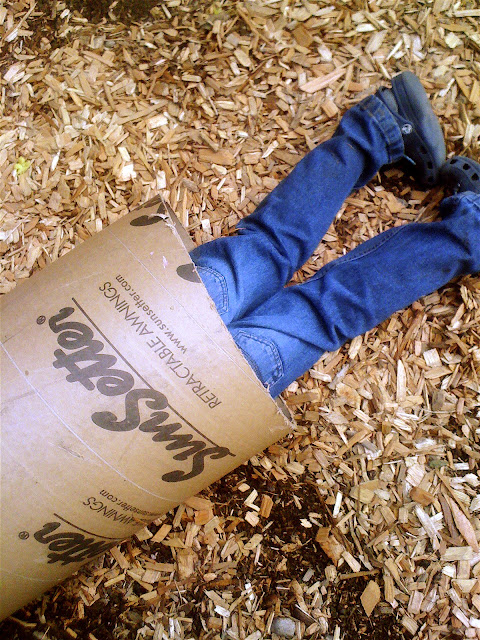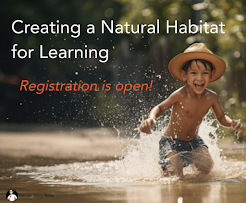Oh, we've had fun with our giant tube, thinking with it, assessing risk with it, and just being brave with it. We used it quite a bit when we first acquired it as packaging from our 18-foot sun/rain canopy. Made of thick cardboard and narrow enough to induce claustrophobia in the adults standing outside, it has been a steady mainstay of Woodland Park since January, but when the 15-foot moving van arrived to move us to our new school at the center of the universe, we had to make a decision. Not only would it be an awkward fit in the van, but I also just couldn't imagine how to store such a monstrous thing in the new space. Besides, as fun as it had been, I was really getting sick of working around it and hauling from one place to another.
It was time to cut it up. This week, the shorter, yet still giant, tubes made their debut. Of course, we would be rolling in them.
We started cautiously, on gym mats, on a gentle slope, with adults controlling the speed.
After all, we'd never rolled around inside giant tubes before and we wanted to make sure we knew what we were doing.
After several trail runs, increasing in speed and daring, only one child emerged with a worried look on her face. The rest were beaming. So we took it to our steeper slope, the one down which we've been racing our wagons. We started with adult hands on, fearing that they would go barreling down the hill at break-neck speeds, but as we've discovered with the wagons, the chunky wood chips on the ground do a great job of preventing things from getting out of control.
So I just stood downhill, making sure the path stayed clear, and that they kept their heads inside the tube, and watched them make it their own. I love the way they naturally took turns, holding the tube steady for their friends as they crawled inside, then giving a little push to get them going.
We tried going one-tube-at-a-time.
We tried racing down side-by-side.
At one point a couple of the guys tried going together in one tube, but didn't like the feeling of knocking their heads together as they bumped down. Of course, they tried it a second time, just to make sure they didn't like it.
There was a lot of negotiation and discussion, most of which didn't require adult assistance.
You could see this one coming from a mile off, but they worked it out.
I'm not surprised. This is the way kids play together when given the opportunity to be on their own, to make a few mistakes, and when they know the adults aren't going to leap in to bail them out.
The expensive canopy that came in the tube is still rolled up, lying along the fence, waiting to be installed. The giant tube is back, baby, and better than ever!




























































